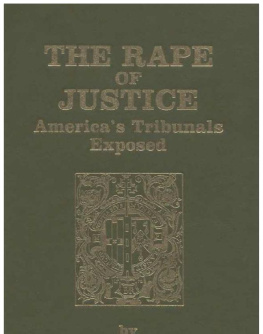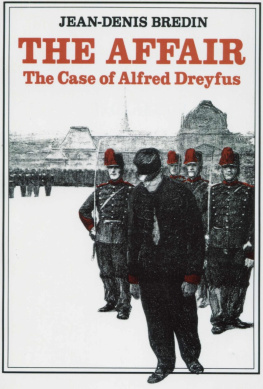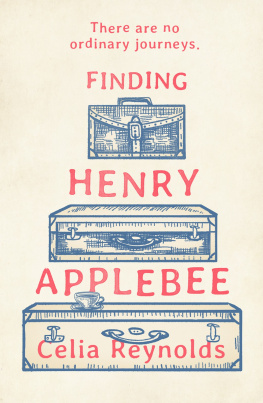The City of the Caliphs
A popular study of Cairo
EUSTACE A. REYNOLDS BALL
The city of the caliphs, E. A. Reynolds Ball
Jazzybee Verlag Jrgen Beck
86450 Altenmnster, Loschberg 9
Deutschland
ISBN: 9783849649692
www.jazzybee-verlag.de
admin@jazzybee-verlag.de
Availability: Publicly available via the Travelers in the Middle East Archive (TIMEA) through the following Creative Commons attribution license: "You are free: to copy, distribute, display, and perform the work; to make derivative works; to make commercial use of the work. Under the following conditions: By Attribution. You must give the original author credit. For any reuse or distribution, you must make clear to others the license terms of this work. Any of these conditions can be waived if you get permission from the copyright holder. Your fair use and other rights are in no way affected by the above." (Status: unknown)
Cover Design: Based on an artwork by http://wellcomeimages.org/indexplus/obf_images/27/20/1ac4ad026c6716d7a3835521fb57.jpgGallery: http://wellcomeimages.org/indexplus/image/V0049368.html, CC BY 4.0, https://commons.wikimedia.org/w/index.php?curid=36668264
CONTENTS:
CHAPTER IV. THE MAKING OF EGYPT.
CHAPTER V. ALEXANDRIA AND THE NILE DELTA.
INTRODUCTION.
IF a plebiscite were taken among travellers in general as to the dozen most interesting and striking cities of the globe, it is probable that Cairo would be included in the list. It is inferior in world-wide interest, of course, to Jerusalem or Rome, or even Athens, but it would probably take a higher rank than many historic capitals. No doubt Cairo, compared with the great capitals of Europe, is modern, or, at any rate, medival, and, indeed, historically of little importance; but it cannot be denied that to the average traveller Cairo is not easily dissociated from Egypt, the cradle of the oldest civilisation and culture in the world. The proximity of the Pyramids and the Sphinx have no doubt something to do with this vague and erroneous view, and with the fictitious antiquity ignorantly attributed to the City of the Caliphs. The most elementary history, handbook or guide-book will, of course, correct this general impression; but it is not, perhaps, an exaggeration, to say that some casual visitors to Egypt begin their sightseeing with a vague, if unformulated, impression that Cairo was once the capital of the Pharaohs, and the Pyramids its cemetery.
The historic and artistic interest of Cairo is, in short, purely medival and Saracenic; and, perhaps, no Eastern city, except Damascus, in the beaten track of tourist travel,embodies so many of the typical characteristics of an Oriental city.
Mehemet Ali and Ismail may be considered by the artist and antiquarian to have done their best to vulgarise, that is, Europeanise, the City of the Mamelukes; but the rebuilding and enlarging under Mehemet, and the hausmannising tendencies of Ismail, have done little more than touch the surface. The native quarter of Cairo still remains a magnificent field of study for the intelligent visitor, especially if he ignores the hackneyed and limited programme of the guides and interpreters; and the artist who knows his Cairo will find the Moslem city full of the richest material for his sketch-book. Every step, observes Mr. Stanley Lane-Poole, tells a story of the famous past. The stout remnant of a fortified wall, a dilapidated mosque, a carved door, a Kufic text,each has its history, which carries us back to the days when Saladin went forth from the gates of Cairo to meet Richard in the plain of Acre, or when Beybars rode at the head of his Mamelukes in the charge which trampled upon the Crusaders of Saint Louis. A cloistered court recalls the ungodly memory of the prophet of the Druses; a spacious quadrangle, closely filled by picturesque, albeit scowling, groups of students, reminds us of the conquering Caliphs of Aly's heretical line, who, disdaining the mere dominion of Roman Africa, carried their triumphant arms into Egypt and Syria, Sicily and Sardinia, whilst their fleets disputed the command of the Mediterranean with the galleys of Moorish Spain.
Cairo is full of these picturesque associations connected with the magnificent age of the Mameluke Sultans, but most visitors know little about them. Probably this is mainly attributable to the fact that most of the books on Egypt rather ignore its capital; and the age of the Saracens is a period as much overlooked by modern historians as that of the Ptolemies.
There are, of course, the standard guide-books, a most skilful condensation of a mass of erudition, but the compilers find the Upper Nile, with its antiquities, of such surpassing interest, that little room can be found for Cairo itself. Besides, guide-books are read of necessity, and not for pleasure or continuously; and in the wealth of dry detail it is difficult sometimes to see the wood for the trees.
There is, however, another aspect besides the sentimental or devotional one, which should not be disregarded; and in the chapter dealing with the regeneration of Egypt under British influence, I have attempted to show how modern Egypt strikes the political observer and the man of practical affairs.
Egypt, with its wealth of antiquities and artistic relics, is, no doubt, of the highest importance to the tourist and sight-seer. Regarded, however, as a community or modern state, the Egypt of to-day holds a very low rank among semicivilised countries. There is a certain amount of reason in the complaint of some modern historians that Western minds seem to lose all sense of proportion and historic perspective when describing this Land of Paradox, which is, after all, but a tenth-rate territory, with an acreage less than that of Belgium, and a population hardly more numerous than that of Ireland. These indisputable facts will, perhaps, come as a surprise to the tourist, who takes several weeks to sail along the thousand miles of its mighty river,'its one and only highway, from Cairo to the Soudan frontier. One is apt to forget that, above the Delta, Egypt simply means a narrow fringe of desert stretching for a few miles on each side of the Nile. This, no doubt, is true; and visitors are perhaps too apt to see the country looming in a mist of mirage, and are unable to resist the weird charm of this unique land.
At the same time, one cannot deny the enormous international importance of Egypt in spite of its small acreage and population. This importance, no doubt, is to some extent fictitious, and is due partly to its peculiar geographical position, which makes it the great highway between the Eastern and Western hemispheres, and partly to its climate, which has converted it into the great winter residence and playground of civilised nations. Besides, magnitude is not, of course, an absolutely reliable test of a country's greatness. Little states, as we all know, have filled a most important part in the world's history,Athens Sparta, Venice, Florence, Genoa, for instance. Then, the Holy Land itself is about the size of Wales, and the area of Attica was no wider than that of Cornwall.
In preparing this book, I have consulted many of the standard English and French works which have been recently published; and I am especially indebted to the valuable information to be found in the works of Professor Flinders Petrie, Professor Mahaffy, the late Miss A. B. Edwards, Sir Alfred Milner, and Mr. Stanley Lane-Poole. For the preliminary chapter on Alexandria and the Nile Delta, I have utilised portions of an article on Alexandria which I contributed to The Picturesque Mediterranean, published by Cassell & Co., Ltd., London, and my grateful acknowledgments are due to this firm for permission to reproduce these portions.






